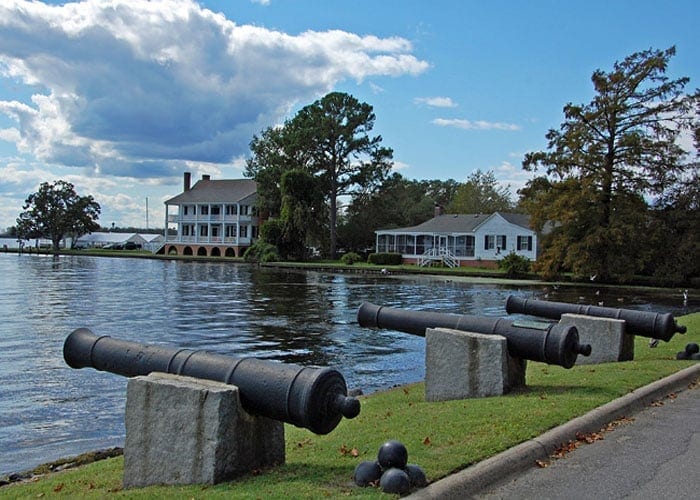Edenton, North Carolina has been described by Forbes Magazine as one of the prettiest small towns in the USA.
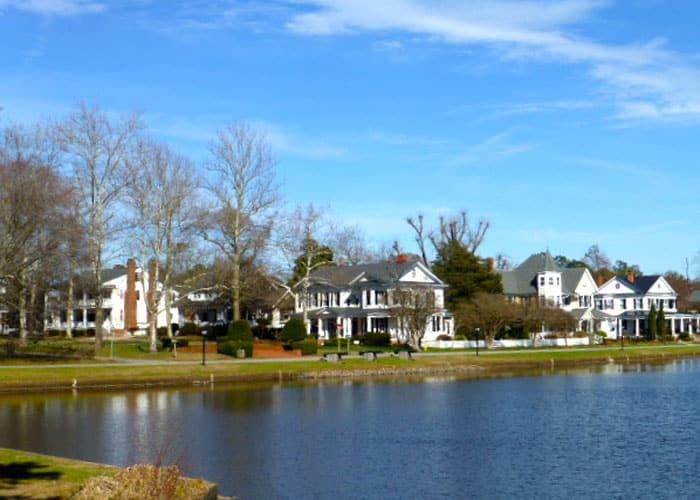
If one could open a travel magazine, have the pages come to life and then drive through the pages – this gives an idea of the perfection of this small town and its living, breathing community going about their lives in a historic setting.
Edenton’s historic homes, dating from the early 1700s, have been beautifully preserved and maintained, incorporating several different styles: Georgian, Queen Anne, Federal , Greek Revival and Victorian. Among its stately residents is a home that is Italianate architecture with Tuscan turrets, and this goes well (somehow!) along Colonial and West Indian style cottages — peppered with arts and crafts bungalows. The whole city is an architectural archive and students from all over come to this “laboratory of architecture” to study the different styles.
Built around the Edenton Bay, it was once a busy port with a seafaring history and tales of pirates — so many of the historic homes have long pedigrees. Among several houses dating from the 18th century: the Cupola House (1758), with a fully restored interior notable for its wood paneling; the Courthouse (1767), which is the oldest “in use” courthouse in the country; and the Penelope Barker House (1782), a waterfront historic home that was actually moved by road from two blocks north of its present location and then added onto three times.
The Barker House is now a a combination of Federal, Georgian and Greek Revival and is used as a Welcome Center for the town to give tours. But everything in then town is preserved to perfection, with several homes identified by the name of the house and the date it was built. It is charm personified against a tapestry of history.
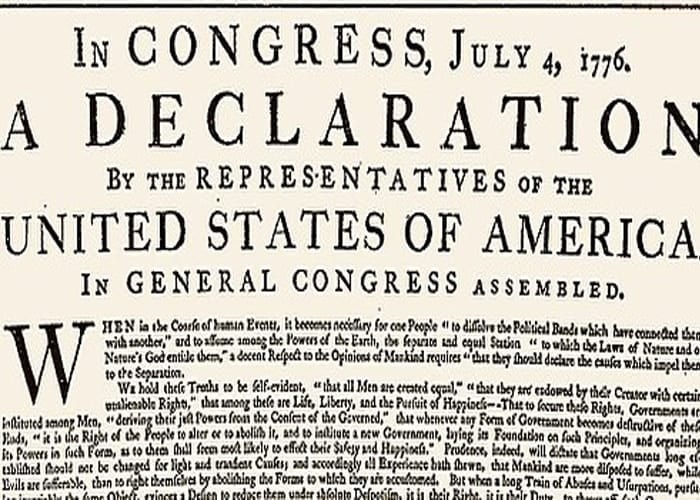
Much history has been written here, including the American rejection of the ruling British Monarchy under George III that led to the founding of the United States — resident Josef Hewes signed the Declaration of Independence on behalf of North Carolina in 1776. The Civil War, with battles of the Federals against the Confederates caused terrible loss of life in the area — not to mention the pain and degradation of slavery that existed from the early 1700s until Abolition.
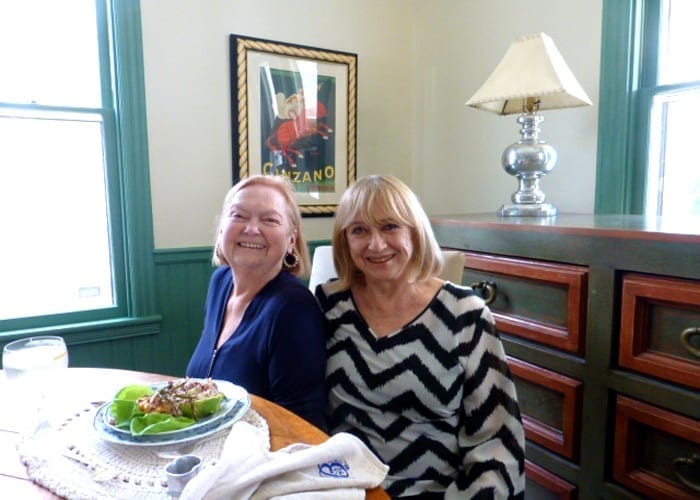
Why Edenton? My friend Eleanor and her family had moved there from the desert a couple of years ago and had invited me to visit (or had I invited myself?). When she was thinking of moving she started looking for homes on the internet in this place called Edenton, which is where she had always intended to live. When asked how well she knew this small town of 5,000, she said she had spent about three weeks there in the 1980’s and liked it !!
This hardly sounded like real research when one is thinking of moving from one side of the country to another, knowing no one in this small town, a dozen states from California. It sounded about as prudent as “Mail Order Brides” and hoping for long distance love. Fortunately, she had found a reliable Sotheby’s Agent, Ann Perry, who must have been equally concerned about her approach to buying a house sight unseen. Anne photographed and measured every little detail of the proposed purchase, sending numerous measurements, photographs and minute details to avoid any comebacks — leading to a happy, informed moving experience.

The “White House,” circa 1893, was the house Eleanor chose. As she is not allowed to fly for medical reasons, when the time came to move, Eleanor’s mother Vi (who was ninety-four at the time!), her Sister Jean Ann, and the lovable rescue dog Taffy got in the Mercedes SUV and drove for six days in comfortable increments, stopping at interesting bed and breakfasts each night. Miraculously, the story has a happy ending because they did find long distance love with this charming town and have all become active members.

Taking a leisurely drive in from Raleigh, I arrived at Eleanor’s Home at noon – it was gorgeous, exactly like the photographs that Anne had sent. Previously, it had been vacant for a few years before a builder bought and restored it to its original character. Being an interior designer with very original taste, Eleanor further furnished and brought it back to its former glory with beautiful paint colors and charming furnishings.
She had prepared a delicious chicken salad lunch at home in her magnificent dining room at a table set with beautiful china and appointments. Besides myself, this was the “original five” — Vi, Jean Ann, Eleanor and Anne Perry who had become a friend after seeing Eleanor through the purchase of her new home.
Before arriving, I had asked Eleanor if we could visit a Cotton Mill Loft Conversion I had read about — and found that Anne and her Company, Sotheby’s, had been involved in the project from its inception. She arranged to take us on a personalized tour — that’s detailed in the liked blog post.
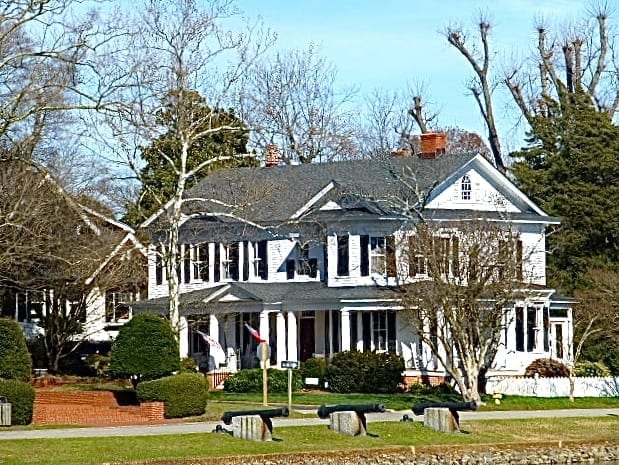
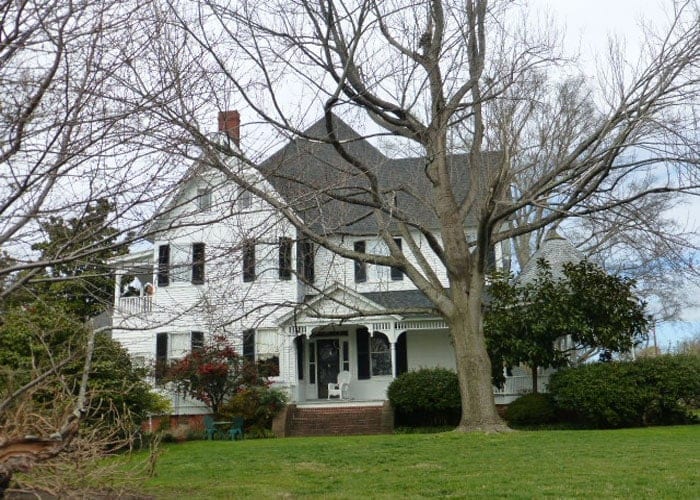

For the next few days, we had the best time possible, being shown around Edenton, trying different restaurants, visiting the restored bed and breakfasts, taking the historic trolley tour, touring the Barker House where Eleanor volunteers as a docent and driving around admiring the points of interest. There are many historic markers linig the streets and the town has an active downtown, with interesting shops and good restaurants. Noticeable is the absence of any “chains,” either clothing or food as the Historic Society has made sure to keep them out.
We walked the brick sidewalks and went into some of the shops, talking to the shopkeepers. Where ever we went, people already knew Eleanor and Jean Ann. The citizens of this small town are the most friendly, welcoming people anywhere and I was told when one drives in Edenton, it is with one hand on the steering wheel and the other free to wave and greet – this is absolutely true! There is a strong sense of community, and a pride in valuing their town and its heritage.
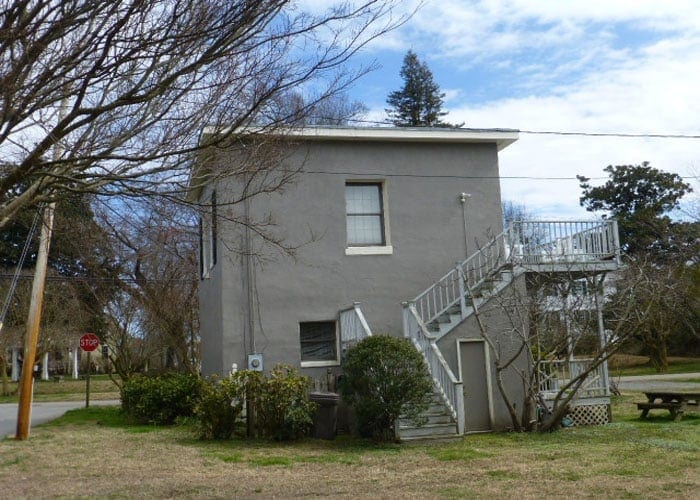
This home is known as “The Ice House” and was previously where ice was made and sold. More recently it was converted into a private residence.

These trees grow in the Albemarle sound! Although it looks like the ocean, it is fresh water which explains why they can survive. The sound and the Edenton Bay are popular for sailing and quite scenic.
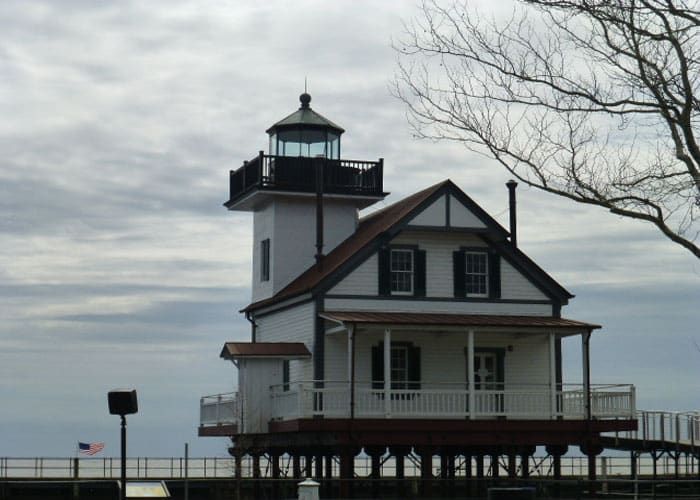
The 1886 Roanake Lighthouse is one of only fifteen “screw pile” lighthouses ever made. It began its life in the Albemarle Sound, and after falling into disrepair, was moved across the water. Now at home in Edenton Bay, it has been renovated and reinstalled, still using scew piles to secure it in the Bay. It has its original Fresnel lens, made in Paris in 1888, and it still lights up the skies at night to protect the ships and the sailors. This is believed to be the last surviving screw pile lighthouse, which is a miracle as it has had a turbulent history, including being severely damaged by hurricanes.

Edenton has significant, albeit painful, historical heritage as well. Harriet Jacobs, an African American woman, was cruelly enslaved here and bore two children to her white “slave master” before managing to escape. For seven years, she was concealed between the floor boards of her Grandmother’s house, leading to permanent physical damage. Eventually boarding a boat and fleeing to New York, she found work with an Abolitionist as a Nanny and was able to write and self-publish the story of her life, an amazing achievement for a slave and a woman of that era.

